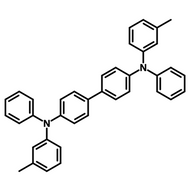Perovskite Interface Materials

Perovskites form the active layer in perovskite solar cells. These devices require multiple other layers and additives to aid charge movement through the PSC device.
- Electron transport layers
- Hole transport layers
- Additives/Dopants (within the perovskite layer)
- Interface/ Hole Blocking layers.
Only by optimizing every layer in your device can you achieve the best solar cell efficiency.
Perovskite Interface Material
Related categories: perovskite inks, perovskite precursor materials, DSSC dyes and electrolytes
Filter by interface:
Filter by device role:
Page 1 of 2
Resources and Support
Incorporating self-assembled monolayers (SAMs) within perovskite solar cells has improved device efficiency. SAMs exist as ultrathin layers that can be engineered to improve various aspects of the solar cell including charge transport and stability. SAMs have benefits including:
Read more...Two commonly used materials for hole selective layer (HSL) or hole transport layer (HTL) are PEDOT:PSS (poly(3,4-ethylenedioxythiophene) polystyrene sulfonate) and self-assembled monolayers (SAMs). Each offers distinct advantages and limitations that impact their effectiveness in solar cells.
Read more...
















































